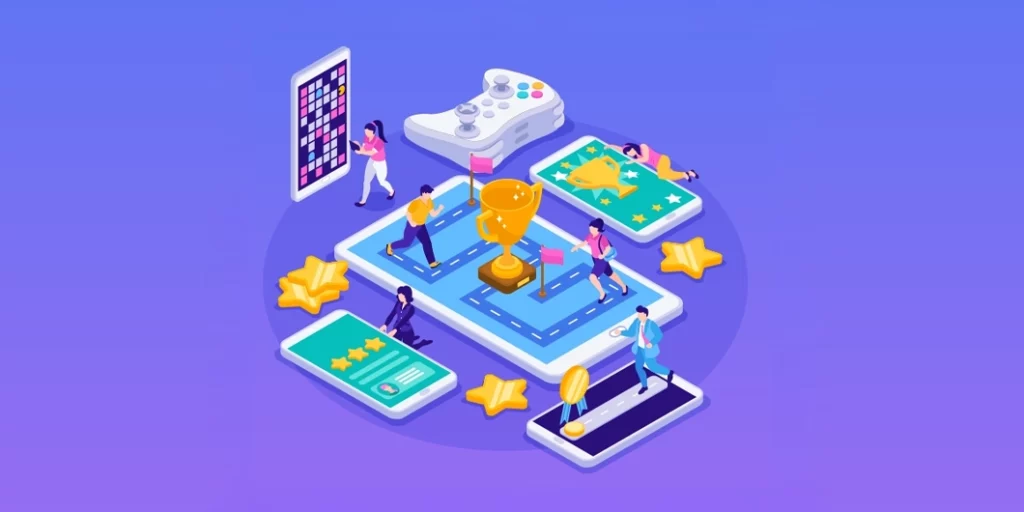
Advantages and Risks in Play-to-Earn (P2E) Gaming
The gaming world has come a long way, evolving from the pay-to-play (P2P) model to free-to-play (F2P), and now to Play-to-Earn (P2E). With this shift, blockchain technology and cryptocurrency have played a pivotal role in creating decentralized gaming economies where players not only enjoy the experience but can earn real-world rewards.
Why P2E Has Gained Popularity
P2E gaming has gained traction primarily due to the financial incentives for players. Unlike traditional games, where spending money doesn’t directly reward you in real-world value, P2E offers players the chance to earn cryptocurrency or NFTs (non-fungible tokens). These assets can be traded or sold for real money, giving players true ownership of in-game items. Blockchain’s decentralized control also means players can have a say in how games are governed, making the gaming experience feel more democratic and participatory.
Advantages of P2E Gaming
Financial Benefits for Players
P2E games offer real-world income opportunities, allowing players to earn money simply by playing. Whether it’s completing missions, battling, trading NFTs, or staking tokens, there are multiple ways to earn. In some cases, players in developing countries even use P2E as a primary income source. ICRYPEX provides a marketplace where gamers and investors can trade major P2E-related cryptocurrencies, including MANA, MOBOX, RACA, SAND, TLM, TRIVIA, ILV, ALICE, and GALA. These digital assets play a crucial role in various P2E ecosystems, positioning ICRYPEX as a vital platform for players seeking to optimize their earnings.
Decentralization and True Asset Ownership
Unlike traditional games where assets are locked within the platform, players in P2E games own their in-game items. NFTs make this possible, enabling players to sell, trade, or lend these assets across different platforms. The interoperability of NFTs between various metaverse ecosystems opens up new possibilities for players to benefit from their digital assets beyond a single game.
Economic and Market Growth Opportunities
The rise of P2E has led to the expansion of a new digital economy powered by crypto and NFTs. This has created jobs in the blockchain gaming space, including roles for developers, content creators, and guild managers. Additionally, institutional investments in blockchain gaming and the metaverse are growing, further fueling the market’s potential.
Incentivized Community Engagement
P2E games often involve governance through decentralized autonomous organizations (DAOs), where players can vote on decisions that affect the game’s direction. Players are rewarded for staking, participating in ecosystem decisions, and contributing to the game’s development, which creates an engaged and motivated community.
Innovation in Gaming and Blockchain Technology
Smart contracts ensure that transactions in P2E games are fair and transparent, while cross-chain gaming ecosystems are expanding interoperability. The integration of AI and the metaverse is enhancing the gaming experience, making it more immersive and dynamic.
Risks and Challenges in P2E Gaming
Economic Sustainability Issues
One of the biggest challenges for P2E games is ensuring long-term sustainability. Many models rely on new players for liquidity, raising concerns about Ponzi-like systems. Inflation of in-game tokens can reduce profitability, and the demand for NFTs and tokens can be volatile, impacting the game’s economy.
High Entry Barriers and Costs
Some games, like Axie Infinity, require expensive NFTs to start playing, creating high entry costs for new players. Gaming guilds can help newcomers but often take a large share of the earnings, and there’s unequal access to early investment opportunities in many P2E projects.
Market Volatility and Token Devaluation
Because P2E tokens are tied to the cryptocurrency market, their value can fluctuate, leaving players vulnerable to market crashes. Developers also face challenges in maintaining long-term token utility as the market evolves.
Security Threats and Scams
Smart contracts can have vulnerabilities, leading to hacks and exploits, as seen with the Ronin Bridge hack. Phishing attacks targeting wallets connected to P2E platforms are common, and the space is also plagued by scams and “rug pulls,” where projects vanish after gathering investment.
Regulatory Uncertainty
The regulatory landscape for blockchain gaming is still unclear. Governments are beginning to impose restrictions on blockchain gaming and crypto earnings, and legal questions about NFTs and their classification as securities remain unresolved. Taxation of gaming rewards is another area of uncertainty that varies by jurisdiction.
Quality and Gameplay Limitations
Many P2E games prioritize financial incentives over entertainment value, which can lead to a lack of engaging gameplay. Furthermore, the absence of AAA-level game development in the blockchain space raises concerns about the long-term appeal of P2E games. If the earning potential decreases, players may lose interest, making sustainability a key concern.
Balancing the Advantages and Risks: Best Practices for P2E Players
To navigate the P2E landscape, players should do their due diligence before investing in any projects. This includes researching the development team, tokenomics, and community engagement. Diversifying earnings across multiple P2E games can help reduce risk, while using secure wallets and multi-factor authentication can protect assets. Understanding in-game economies is crucial so players aren’t solely reliant on gaming income.
The Future of P2E: Can It Evolve into a Sustainable Model?
The future of P2E gaming looks promising, with hybrid models combining P2E with traditional gaming experiences. To ensure long-term sustainability, better tokenomics and more transparent game economies are needed. As institutional and mainstream gaming companies enter the blockchain space, and as regulatory frameworks take shape, P2E gaming could evolve into a more sustainable and widely accepted model.